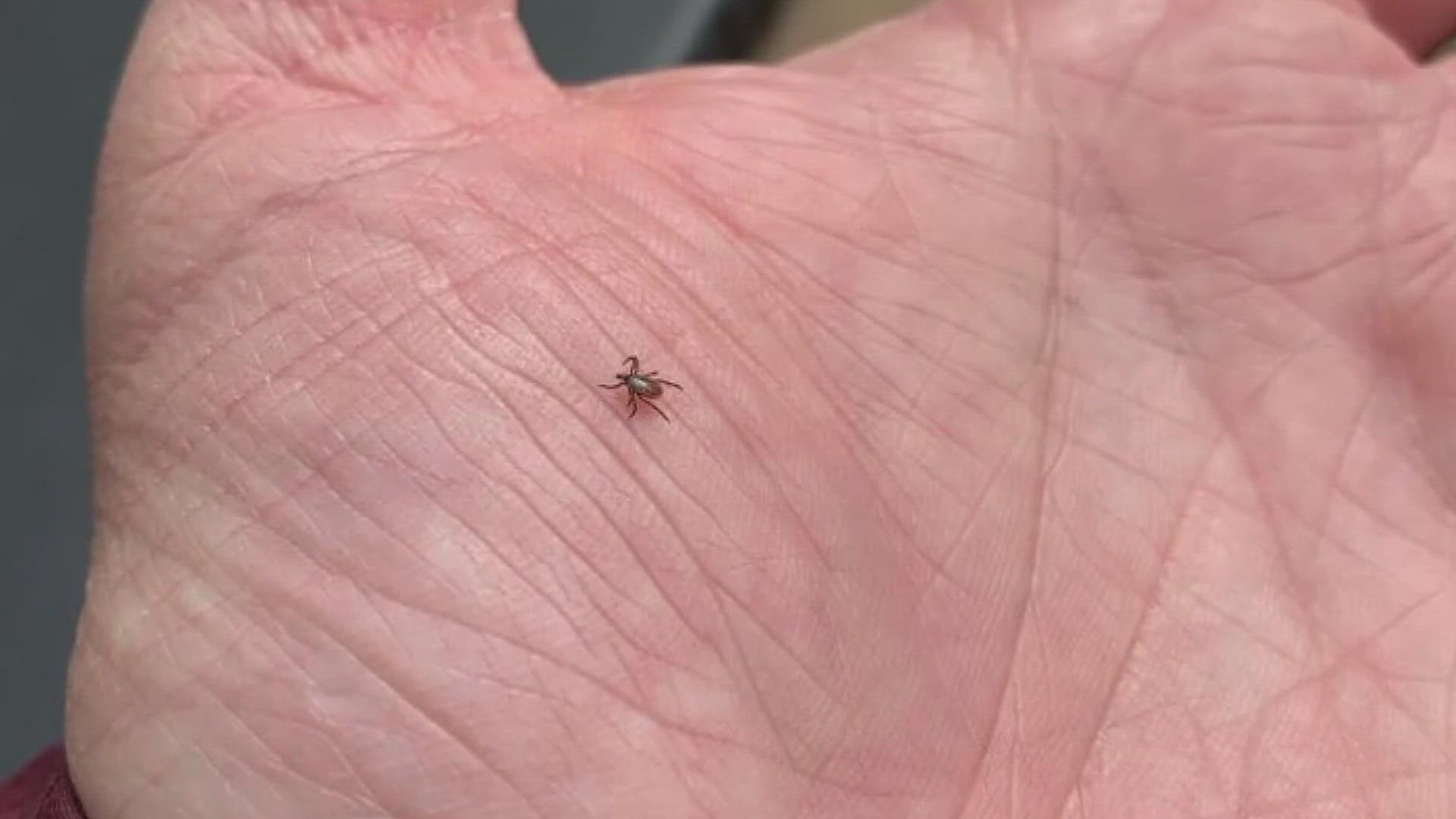AUGUSTA, Maine — Health authorities in Maine are warning residents of a second peak in tick activity in the state this fall.
Many people associate deer ticks with summer. However, the Maine Center for Disease Control and Prevention said they peak again from late September to November.
The ticks can carry diseases, such as Lyme disease, and are often found in wooded and leafy areas. Maine CDC said it has recorded more than 1,000 cases of Lyme disease through Oct. 12.
The state was also experiencing a record high year for babesiosis, another tick-borne disease.
According to the CDC, many people who are infected with babesiosis feel fine and do not have any symptoms. Some people develop nonspecific flu-like symptoms, such as fever, chills, sweats, headache, body aches, loss of appetite, nausea, or fatigue.
Because babesiosis parasites infect and destroy red blood cells, babesiosis can cause a special type of anemia called hemolytic anemia. This type of anemia can lead to jaundice (yellowing of the skin) and dark urine.
Babesiosis can be a severe, life-threatening disease, particularly in people who
- Do not have a spleen;
- Have a weak immune system for other reasons (such as cancer, lymphoma, or AIDS);
- Have other serious health conditions (such as liver or kidney disease); or
- Are elderly.
Complications of babesiosis can include
- A low and unstable blood pressure;
- Severe hemolytic anemia (hemolysis);
- A very low platelet count (thrombocytopenia);
- Disseminated intravascular coagulation (also known as “DIC” or consumptive coagulopathy), which can lead to blood clots and bleeding;
- Malfunction of vital organs (such as the kidneys, lungs, and liver); or
- Death.
Read more about babesiosis on the CDC website.

